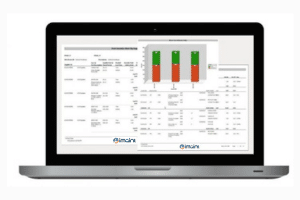Preventive maintenance (PM) is the performance of maintenance activities that are designed to prevent a piece of equipment from failing. It is a recognized fact that the costs of repairing a piece of equipment that fails unexpectedly are substantially higher than the costs of maintenance tasks to keep equipment running smoothly. In addition, there is potential production loss caused by unplanned downtime when a piece of equipment fails, which can be extremely costly. This begs the question: is there really such thing as too much preventive maintenance?
How Much is Too Much Preventive Maintenance?
PM strategies are based on time or usage. Maintenance intervals are set based on calendar time or meter run count since the last activity. Once this time or meter threshold is crossed, an automatic maintenance event is triggered and the task is executed. If a piece of equipment fails unexpectedly, the preventive maintenance interval may be reduced and the maintenance workload will keep increasing, even if the failure was not directly related to preventive maintenance. Many companies are giving thoughtful consideration to their strategies for preventive maintenance in order to optimize their resources and improve their maintenance performance.
One way to improve a preventive maintenance strategy is to introduce a condition monitoring or predictive input to the decision on whether to perform a maintenance task. This has proved to be a very effective way to improve the maintenance performance because equipment will only be worked on once it begins to show signs that it is no longer operating in its normal range. Examples of this are pump vibration and infrared scanning of electrical systems. Condition monitoring systems can be expensive to buy and require training of personnel, so if this option is out of reach, there are some simple common sense ways to make improvements to the existing time or meter-based strategy.
Maintenance planners should check the work history on a piece of equipment before scheduling a task. Maintenance teams sometimes learn that they have just performed a preventive task on a piece of equipment that had recently failed, therefore wasting parts and technician time.
Be disciplined in performing simple root cause analysis to check whether a failure is related to the lack of preventive maintenance or some other reason. Only increase the frequency of preventive tasks if there is clear evidence that this will help prevent a future failure and take action to eliminate other causes of failure.
Analyze the data at your disposal. For example, you may find that a particular piece of equipment often fails soon after a preventive maintenance task. This could be due to the stresses on the equipment during shutdown and startup, which if not managed properly can put the equipment at risk. Equipment that is sensitive to repeated shutdown and startup activity should be protected as much as possible from unnecessary events that contribute to failure.
Thoughtful reviews of your PM program can often yield significant efficiency improvements. Coupling these reviews with the monitoring of maintenance metrics can help every organization make improvements in maintenance costs and reliability of their facility.
DPSI’s iMaint software has extensive scheduling options and allows problem thresholds to be established and work orders generating to correct issues such as temperature spikes, vibration, etc. Data from condition monitors, if present, can be imported into iMaint on a real time basis. Extensive historical analysis is available using reports, graphs and dashboards, including key performance indicators (KPIs). To learn more about iMaint, or if you’re still wondering how much is too much preventive maintenance, please contact DPSI today.




